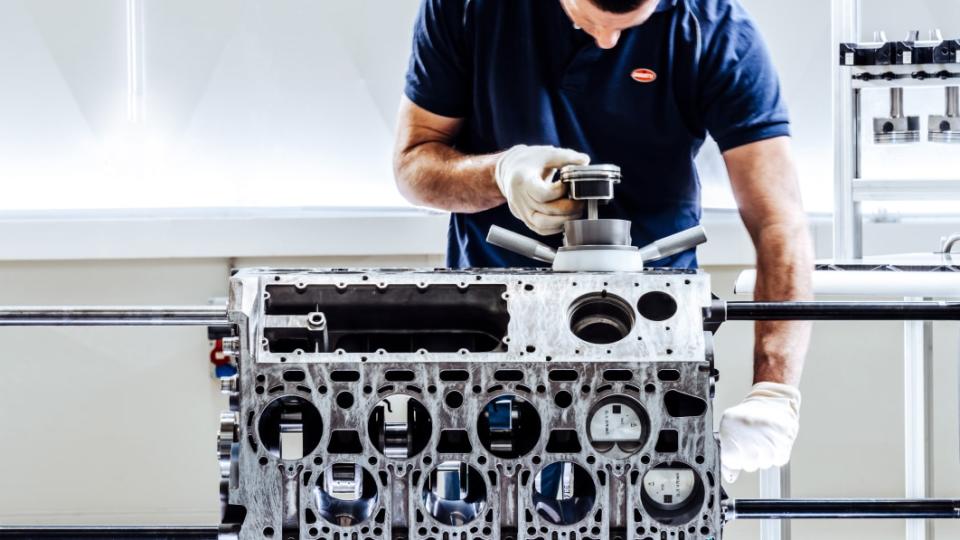Bugatti looks back at how how it developed the W16 engine

As the end of the Chiron's production run nears, Bugatti is taking a look back at the W16 engine that has powered its cars since it returned to the scene nearly 20 years ago. The engine is relatively compact, hugely powerful, and it has helped the firm set several world records.
Former Volkswagen boss Ferdinand Karl Piëch knew that successfully reviving Bugatti required building a car that stood out from everything else on the road at the time. He initially planned to power the then-upcoming Veyron with an 18-cylinder engine and sketched it out on an envelope while riding on a high-speed train from Tokyo to Osaka in Japan in 1997. His concept later became a 16-cylinder engine, but dropping a pair of cylinders didn't make the unit easier to develop. Bugatti engineers started from scratch in order to make the W16 a reality.
"We had to engage in basic development for every component; every vehicle part had to be constructed anew and tested — even the engine test bench. The only thing we didn't change was the pencils we used for drawing," said former Bugatti head of technical development Gregor Gries. The initial goal was to launch the Veyron with over 1,000 horsepower, and even some insiders doubted that this could be achieved.
Bugatti pulled it off: The Veyron entered production in 2005 with a quad-turbocharged, 8.0-liter W16 engine rated at 1,000 horsepower and 922 pound-feet of torque. Horsepower increased to 1,200 in the Veyron Super Sport, and the Chiron inaugurated a new version of the engine rated at 1,500 horsepower thanks in part to bigger turbos, though the Chiron Super Sport offers a 1,600-horsepower output.

 Yahoo Autos
Yahoo Autos 
